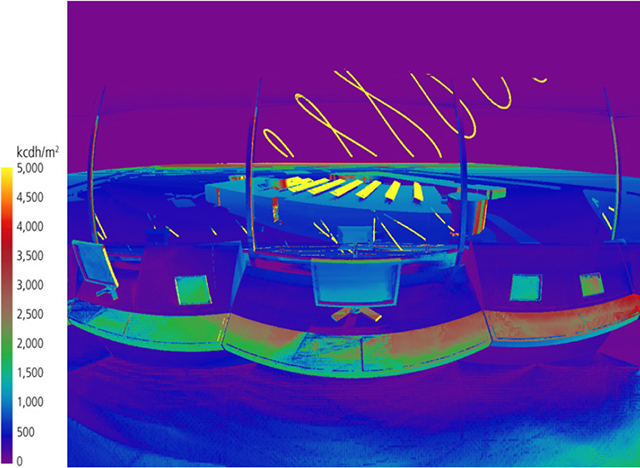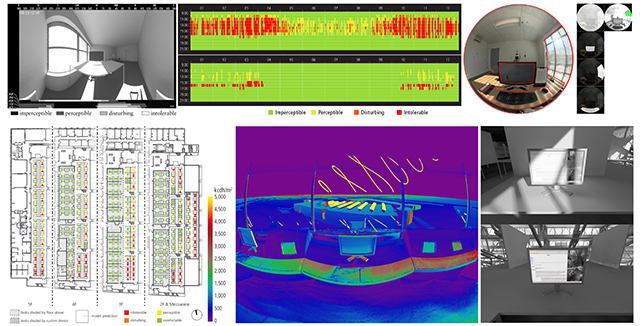
by J. Alstan Jakubiec, Architecture and Sustainable Design, Singapore University of Technology and Design (SG)
It is desirable to design buildings with natural daylight and views to the outside, which can maximize passive solar heating, minimize electric lighting use and contribute to feelings of well-being and awareness. Unfortunately, the presence of daylight is not always a positive one. Excessive brightness, strong contrast or intense reflections from daylight can cause visual discomfort or the inability to perform tasks. Typically, the total amount of luminous flux incident upon a surface per unit area–illuminance–present is used to predict visual discomfort due to questions about the benefit and validity of luminance-based analysis measures that are more related to the way the human visual system perceives light. This thesis aims to advance the understanding and usefulness of visual comfort prediction to the point that it can become commonly used in architectural design processes.
One method through which this is achieved is by testing the ability of visual comfort analysis to resolve subjective occupant comfort. It was found that of existing discomfort glare metrics, daylight glare probability (DGP) was the most likely to perform well in a variety of daylight conditions and space types. Furthermore, a long-term simulation and survey study found that between 53.7% and 70.1% of an occupant’s visual satisfaction could be resolved by analyzing DGP, the presence of direct sunlight and predicted monitor contrast ratio. This choice of metrics was reinforced by a separate laboratory study, which found that 74.4% of subjective comfort could be resolved and identified new subjective luminance thresholds that identify likely discomfort. A new adaptive visual comfort model, the ‘adaptive zone,’ is proposed in this thesis to deal with spatiality and view in visual discomfort analysis. Finally, ways of applying these verified and new measures in design processes are tackled in this work by producing new temporal maps, spatial discomfort analysis, and plan-based mappings of long-term visual comfort.
J. Alstan Jakubiec’s Ph.D. thesis can be downloaded at http://dspace.mit.edu/handle/1721.1/91295#files-area




